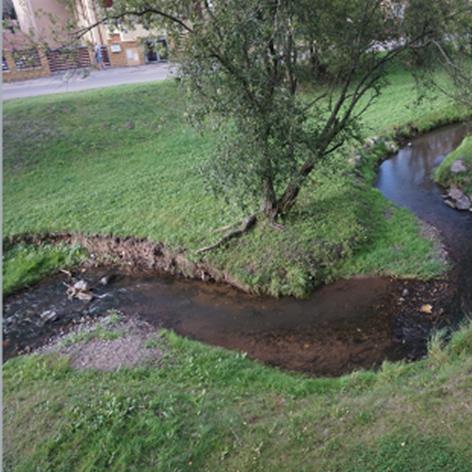
Increasing the retention capacity of existing channels and floodplains by restoration
The measures reside in terrain modifications of channels and floodplain to increase their ability to slow down the runoff and to create inundation zones so that potential consequences of surface runoff would be reduced. They can include individual modifications that are generally termed “restoration”. Specifically, modification of the channel’s course, branching of streams, channel stabilisation, restoration of oxbows, accompanying riparian vegetation. The effect of the stream modification itself is not decisive in terms of surface runoff. However, if the modification is a part of a set of other measures in the contributing area, it can certainly play a positive role in slowing down the runoff and reduction of peak discharge. In general, the goal is to bring the stream as close as possible to the near-natural state.
Check out the RAINMAN good practice examples:
- Repair of a mill ditch system and quarry lake - Korbitzer Schanzen, Kirchsteigbachtal, DE
- Bank reinforcement for the course of the brook - Korbitzer Schanzen, Kirchsteigbachtal, DE
- Implementation of risk reduction measures through land consolidation, DE
- Flood protection measures Strunkovice nad Blanicí , CZ
READ MORE:
- Office International de l’Eau (2015): Natural Water Retention Measures, URL: http://nwrm.eu (19.03.2020): floodplain restoration and management
Tomáš Just, AOPK ČR




